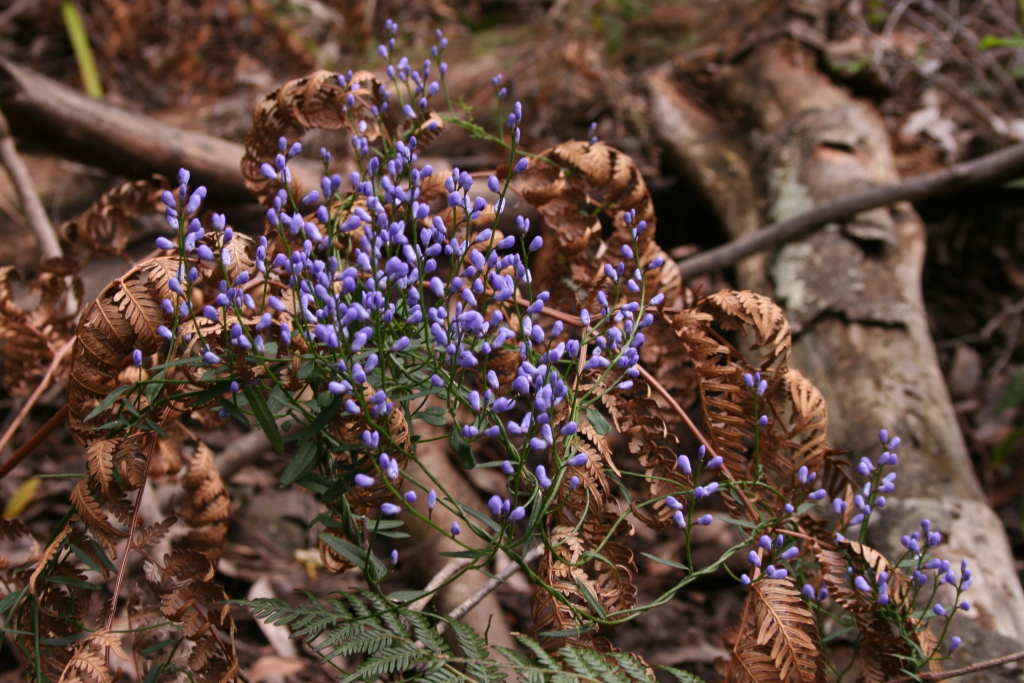Comesperma volubile
Labill. Love CreeperTwiner, ascending to c. 3 m high, rarely a suberect shrublet; stems glabrous, angled. Leaves absent or few, linear to ovate, 10–45 mm long, 1.5–9 mm wide. Flowers blue or purplish, in lateral racemes 3–12(–25) cm long; pedicels 2–4 mm long; sepals free, the outer 3 broad-ovate, c. 2 mm long, wings obovate to c. orbicular, 4–7 mm long, shortly clawed, keel darker than other segments, strongly dilated and pouched from near midway, 3–5.5 mm long, with 2 short oblong appendages just below apex; upper petals oblong to obovate, subequal to keel and united with it below midway, yellow-tipped. Capsule narrow-cuneate, 12–20 mm long; seeds obliquely ellipsoid, 3.5–4.5 mm long, tuberculate; coma of silky hairs c. 1 cm long, weakly attached along margins. Flowers mainly Aug.–Nov.
LoM, MuM, Wim, GleP, Brid, VVP, VRiv, GipP, OtP, WaP, Gold, CVU, GGr, DunT, NIS, EGL, EGU, WPro, HSF, HNF, OtR, Strz, MonT, HFE, VAlp. Also WA, SA, Qld, NSW, Tas. Widespread in heathland and woodland communities from near sea-level to the subalps at c. 1100 m, chiefly south of the Great Dividing Range. Widespread in heathland and woodland communities from near sea-level to the subalps at c. 1100 m, chiefly south of the Great Dividing Range; rare in mallee districts (Little Desert only).
Walsh, N.G. (1999). Polygalaceae. In: Walsh, N.G.; Entwisle, T.J., Flora of Victoria Vol. 4, Cornaceae to Asteraceae, pp. 130–137. Inkata Press, Melbourne.
 Spinning
Spinning


